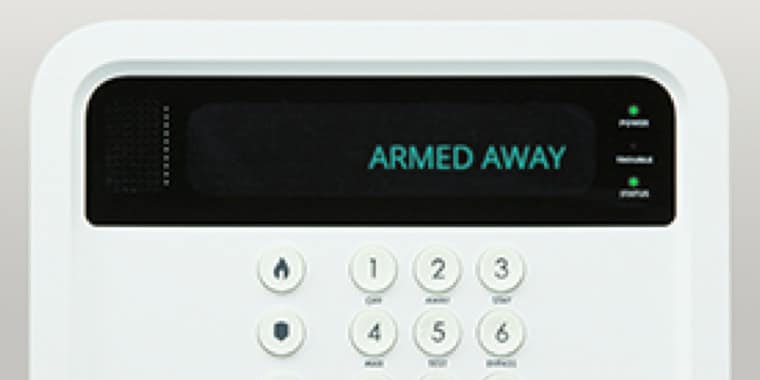The Home Automation Guide to Building Your Smart Home
Buying home automation systems may seem daunting. It’s hard to spot the best choice when you look at the wide array of technologies, prices and promised savings. Even more importantly, how do you determine the level of quality in the monitoring and services offered unless you know exactly what to look for? Take your first steps with this home automation guide straight from the experts.
First ask: What am I trying to automate?
The most common reasons for buying a home automation system are for energy efficiency, convenience, and security. Buyers can choose a fully integrated system or an individual system purchased separately. In other words, you can purchase a home automation system specifically to operate your entertainment devices, lighting and temperature control, or just your security apparatus.
When looking to buy a home automation system, there are several things to consider:
- Your automation needs. Are security and remote access at the top of your list? Or is customized lighting and appliance control something that means more to you?
- Your installation preferences. Some systems you can install on your own, while others require professional installation.
- Your preferred monitoring methods. Do you prefer to control your sensors, lights, motion detectors, and alarms from your mobile device?
Once you’ve decided what your top priorities are, you can begin deciding which components of a home automation system you’d like to have.
What are the key components of a home automation system?
Motion Detectors
Motion detectors have been around for decades. The first iterations of them ran on sound waves, which led to many false alarms. Now, motion detectors mostly use infrared to detect motion outside and inside of your house. Infrared motion detectors are sensitive in the 8-12 micrometer range of infrared energy, which is the range that corresponds with the temperature of human skin, about 93 degrees Fahrenheit.
Products like ADT’s burglar alarm systems can put your mind at ease by alerting you to movement in and around your home by unwanted intruders. And don’t worry that your pets will set your alarms off at all hours—motion detectors can approximate the mass of a moving object, so your pets are free to roam about your house while you’re away.
Touchscreen Panel
Interactive touchscreen panels allow you to manage your security system from home. Touchscreen panels give you the status of your home, allow you to arm and disarm your system, adjust your lights, see video from your security camera, and more. Put your home at your fingertips so you know that you and your home are safe and secure at the touch of a button.
Video Cameras
Video cameras are a classic, yet important, feature to include in your security system arsenal. They are a great line of defense when you can’t be home. Almost like an extra set of eyes, video cameras give you instant access to view your home from wherever you are.
As part of a home automation system, like with ADT Pulse, the security cameras come wireless and provide a wide range of features such as high resolution color, 360° viewing, and low light viewing. You can even turn your cameras on and off and watch a live feed directly from your smartphone, tablet, or computer.
Smart Thermostat
Remote home thermostat sensing allows you adjust the temperature of your home or a designated area from almost anywhere. With temperature alarms enabled, you can monitor your home’s critical areas and receive notification of changing temperatures. All you need is a smart phone, iPad or a mobile web connection to monitor and control the temperature in your home.
Products like Nest are the next generation of smart home technology. It actually learns the temperatures you like and programs itself. Do you turn down the heat on your way to bed? Or maybe you turn it up a few degrees on the weekend? Another benefit of this technology allows you to change the temperature of your home from your phone, tablet, or laptop. Nest remembers your activity and auto-adjusts over time. This cuts down on human error and cuts your energy spending. Because Nest now works with the ADT Pulse® app, you can change the temperature from your phone, tablet or laptop. Connect your Nest Learning Thermostat to Wi-Fi and use the Nest app to get important alerts on your phone, like if your home is so cold that your pipes could freeze.
Lighting Control
Safety and convenience come together with automatic lights. You can use your automated lights to turn on and off while you’re away or intimidate burglars into choosing another target—all from afar. With automated home lighting control, you can activate your lights digitally or remotely. Plus, it’s a feature that can add resale value to your home.
Smart home security systems are also an effective way to make your home more energy efficient. For example, program the system to turn lights off when you’re away. Adjust the brightness in a room, or set the temperature of the room remotely. Control everything including the sensors, dimmers and in-wall switches from a central control unit or through your mobile device.
Window and Door Sensors
It’s not that difficult to protect your front and back doors with sturdy locks, but an unlocked window or even removal of a windowpane leaves your house vulnerable. When you have an automated system to monitor your windows, more entryways are protected.
Additionally, with an automated system – even if you forget to set your alarm at home – you can set the alarm from your smartphone wherever you are.
Final step: Installation and Maintenance
If you’re trying to decide between buying home automation systems that are DIY or require professional installation, your choice will largely depend on system complexity. Generally, a system that includes all three aspects of home automation will require professional installation, especially if you want your system to be monitored. ADT offers secure installation at prices that are friendly to your wallet.





